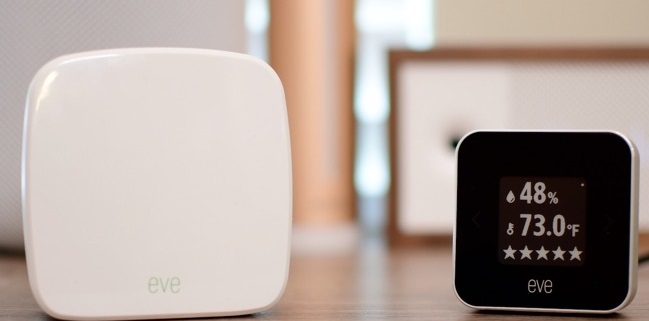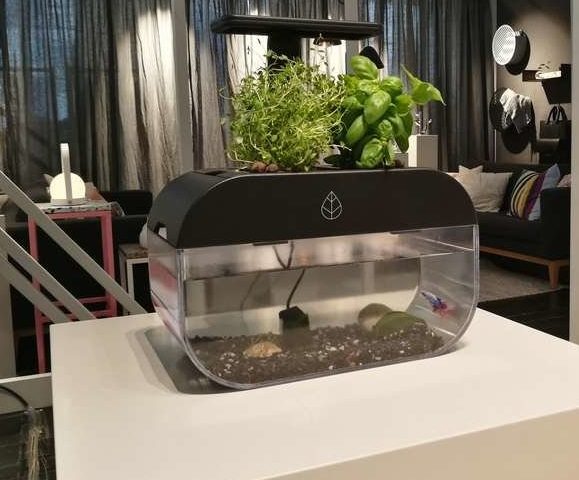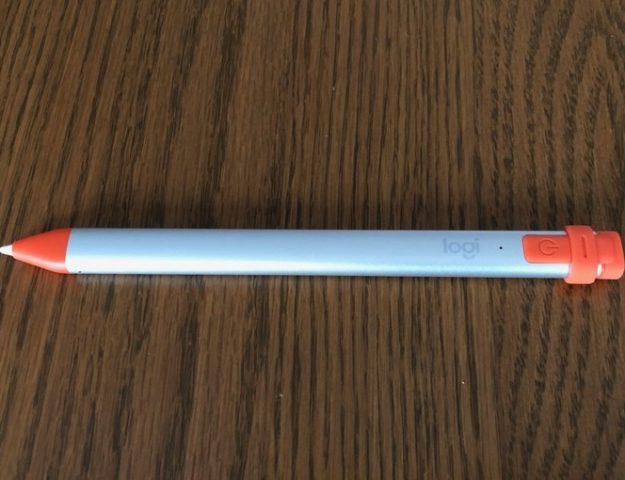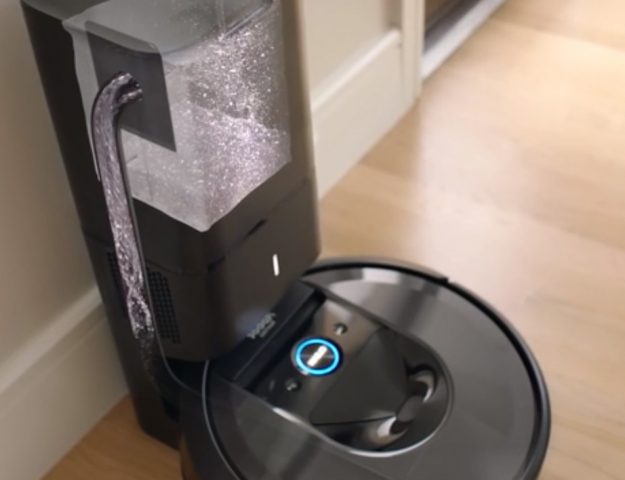Climate Monitoring and HomeKit Siri automation – Eve Room 2

Eve Room was one of the first HomeKit products to reach the market. Years later, Eve Systems returns with the Eve Room 2, the aptly named updated version.
A substantial upgrade
You’ll find many new aspects to the Room 2 that the original was lacking. A more modern look, at less than a quarter of the size, with the white plastic replaced with a svelte aluminum frame. On the front, amid a black plastic bezel, you’ll find the new e-ink display. The screen can now be used to display metrics, allowing you to glance at the Room 2 rather than having to open the app, or query Siri.
The screen offers four display modes, one showing all 3 metrics, while the others highlight one in particular. These modes are easily cycled through with the arrow buttons on either side of the display.
The trio of AA batteries have been tossed, replaced by a new lithium-ion battery that can be charged over micro USB. A positive change, although we would have preferred USB-C over the micro USB legacy connector, especially for a product we’d expect to be around for a while.
With normal use, expect the built-in battery to last approximately six weeks. The Room 2 will automatically switch to energy conservation mode as the battery depletes. In this mode, only temperature and humidity data will be collected.
Compared to the other metrics, air quality can be battery-intensive, explaining the limited battery lifespan.
Metrics
The Eve Room’s readings are quite accurate based on our testing.
When reading temperature, it has an operating range of 0°C to 50°C (32°F to 122°F), and is accurate within roughly half a degree on the Fahrenheit scale. We compared the readings with our digital Thermapen, and they were within 2 degrees of one another – more than accurate enough to adjust your home’s temperature.
The humidity readings have a degree of accuracy of 3%, and seem to also be on track. Our other air quality measurement devices reported extremely similar numbers.
Unlike humidity and temperature, air quality is harder to pin down, because it can mean many different things. For example, the second generation Awair sensor we reviewed takes its air quality rating from five different metrics.
When it comes to the Eve Room 2, it measures the volatile organic compounds (VOC), which encompasses thousands of carbon-containing chemicals present in the air. After detecting these gases in the air, the Eve Room 2 displays them in PPB (Parts Per Billion.)
VOCs are emitted by an array of things in the home, including building materials, stoves, chemicals, personal care products, air fresheners, smoking, office equipment, furnishings, cleaning compounds, and many more. These may cause a variety of health issues, including respiratory symptoms, inflame allergies, eye/airway irritation, and more, especially depending on the levels and amount of exposure.
After taking these measurements, the Eve Room 2 presents them as a star rating within the app, as well as on the screen in order to provide you a simplified understanding of your air quality.
The Eve App
Especially when looking at the free options, Eve’s app has long been one of the best HomeKit apps available.
If you’re looking for accurate measurements, you’re better off using Eve’s app rather than the Home app. With Apple’s Home app, you’ll be provided simplified values for each metric (such as “excellent” air quality), along with a number for temperature and a percentage for humidity.
Within Eve’s app, you’re provided the exact parts-per-million value of the air quality, alongside the generalization.
Furthermore, all these data points can be viewed as graphs over time periods such as the past hour, day, week, month, or year. If you really want to get down to specifics, you can view each data point, as well as when it was collected.
The automations can be made more precise as well. The rules created via the app allow a fan to be turned on when the air quality hits a specific PPM value, rather than a generic “poor” air quality.
Beginner users will find Apple’s offering plenty, but for those looking for the next level of control, more specific control is offered by the Eve app.
Setup
The setup process couldn’t be more simple – simply open the Home app, tap ‘Add accessory’, and scan the HomeKit code provided on the bottom of the unit. A minute or two later, and the Eve Room 2 is now added to your home.
Other features can also be accessed when adding the Eve Room 2. For instance, specific names can be attributed to each metric, and you can select specific rooms in your home – both of these are useful for identification within the app, and for conversing with Siri.
While we were setting up our Room 2, we had to perform a firmware update – one of the messier aspects of the HomeKit. Updates require use of the manufacturer’s app rather than the Home app, so in order to update, open up the Eve app and find the accessory.
Out of the gate, the Room 2 needs a few minutes to start propagating data, especially so with air quality, the last metric to appear in the app.
If you would like remote access, you’ll need a form of Home Hub – this means a HomePod, Apple TV, or even an iPad that stays at home.
Automation, and Rules
Users will want to engage in a few common automations with the Eve Room 2. For example, you can set the air purifier to activate when air quality drops, or when the temperature gets too high on a muggy day, the ceiling fan in the living room can turn on. A humidifier or dehumidifier can be set to spin up as the humidity levels rise or lower.
Eve Degree Comparison
If you’ve taken note of previous Eve products, you’d be forgiven if you mistook the Eve Room 2 for the Eve Degree, especially as they look almost identical in their e-ink displays and aluminum construction.
In truth, multiple differences separate the two devices. Both use HomeKit sensors to read humidity and temperature, but the Eve Room is intended for indoor use, adding the air quality sensor.
When it comes to power, the Eve Degree utilizes a replaceable coin cell battery, while the Eve Room 2 has an integrated rechargeable battery. Surprisingly, the Degree provides more longevity on a single charge, able to last for an entire year before a new battery is needed.
If all you need is temperature and humidity, opt for the Eve Degree, as it’s the only one rated for outdoor use.



